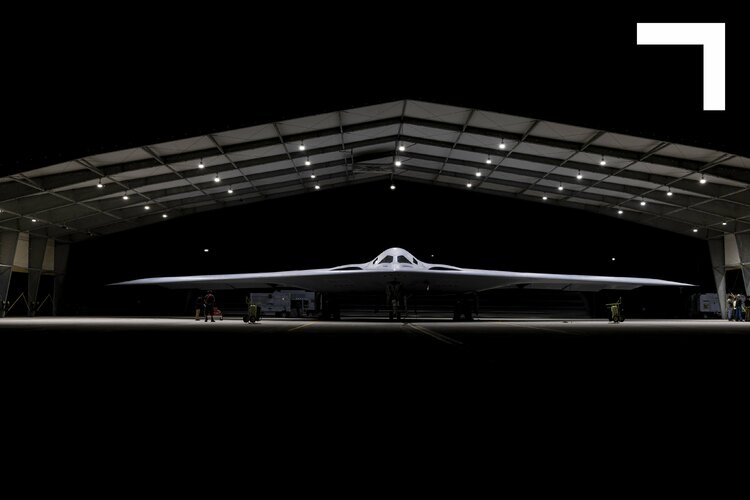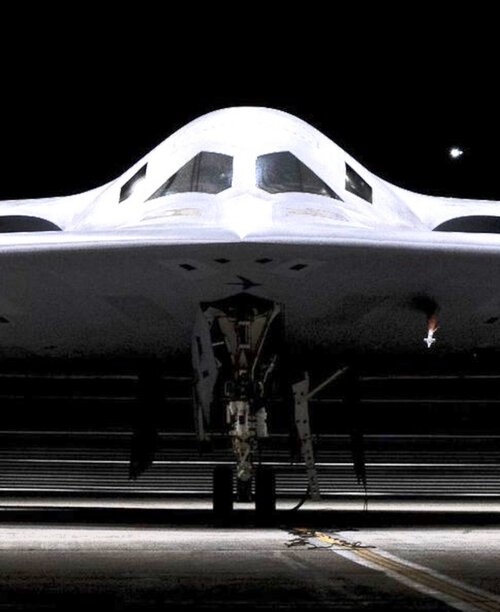The B-2 was first revealed to the public on November 22, 1988, when AV-1 (82-1066) was unveiled at Palmdale. At this time, the aircraft was still not ready for its first flight. The fact that the production and service-introduction schedules were not revealed led the media to suspect that the program was well behind schedule, which was indeed the case. The media speculation got even worse when the first flight of the AV-1 was delayed. At this time, Congress was reluctant to commit to any production until flight testing was well under way.
Taxi tests began on July 10, 1989. The B-2 finally made its first flight on July 17, 1989 from Palmdale, crewed by chief test pilot Bruce J. Hinds and Col. Richard Couch. It lasted 112 minutes and ended with a landing at Edwards AFB. After carrying out initial tests, AV-1 was used for radar cross section tests. In early 1993, AV-1 was placed in long term storage to await upgrading to full service configuration prior to joining the operational fleet.
The second test aircraft (AV-2, 82-1067) flew for the first time on October 19, 1990 from Palmdale, landing at Edwards AFB. It was heavily instrumented and served as the loads test aircraft.
AV-3 (82-1068) took to the air for the first time on June 18, 1991. It was the first radar and navigation test aircraft.
AV-4 (82-1069) followed on April 17, 1992, and AV-5 (82-1070) on October 5, 1992. These two planes were used for avionics and weapons testing. The first bomb to be tested with the B-2 was a 2000-lb Mk 84, which was dropped from AV-4 on September 12, 1992. AV-5 was the intended for armament, climactic, and low-observability testing.
The last development aircraft, AV-6 (82-1071) flew on February 2, 1993. It was used for Tech order validation and fur further weapons and avionics testing. By January 1995, the six FSD B-2s had logged more than 2300 hours in the air in more than 490 flights. Most of the work was done by the 420th Flight Test Squadron at Edwards AFB.




